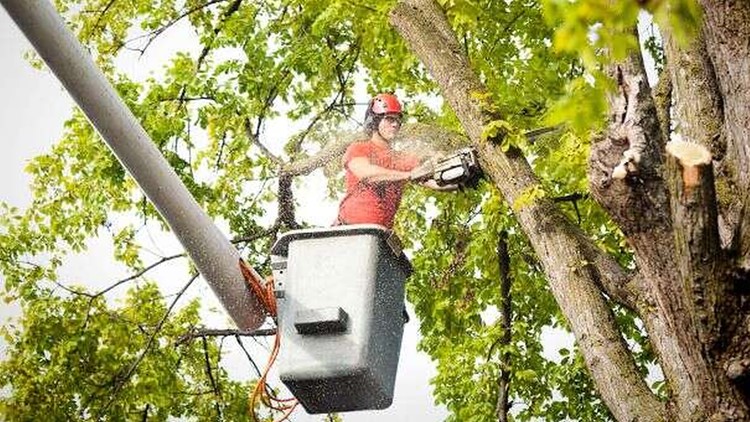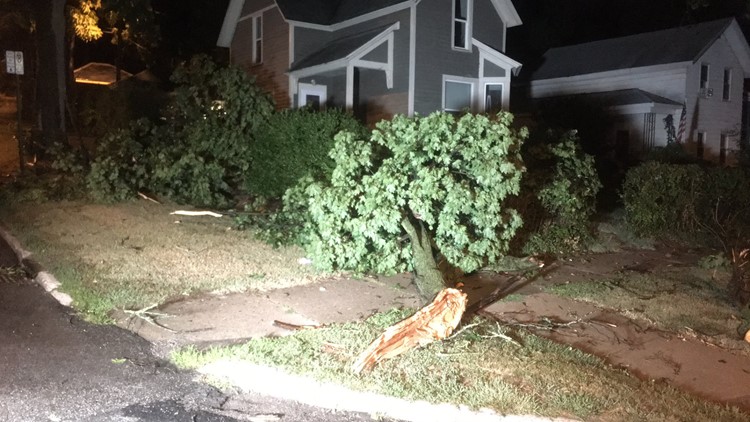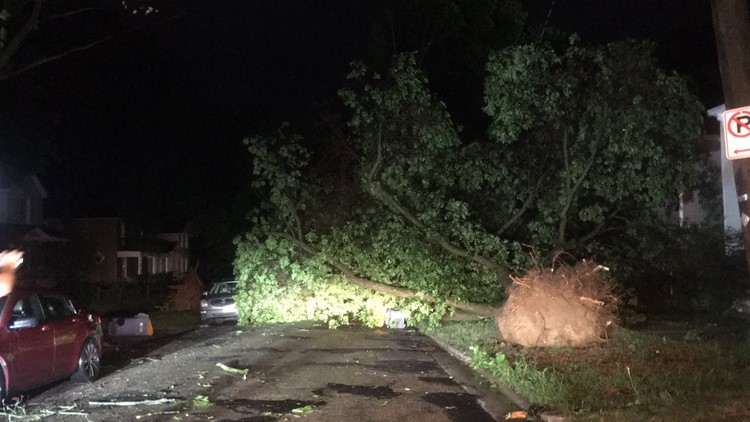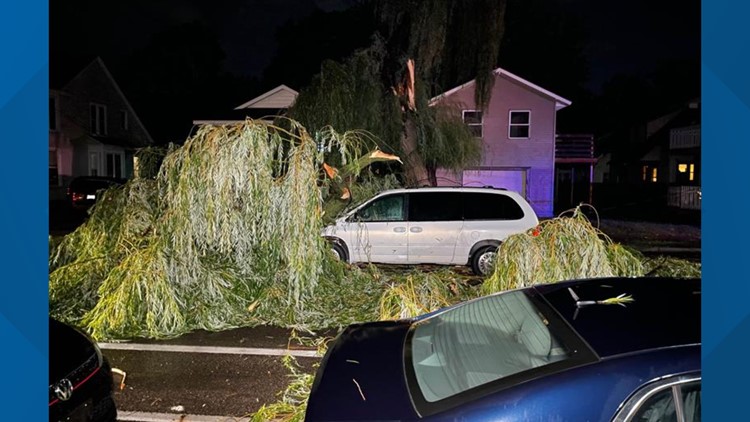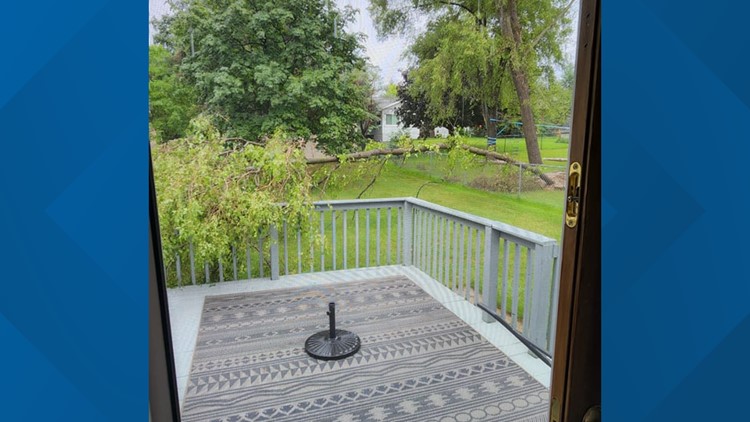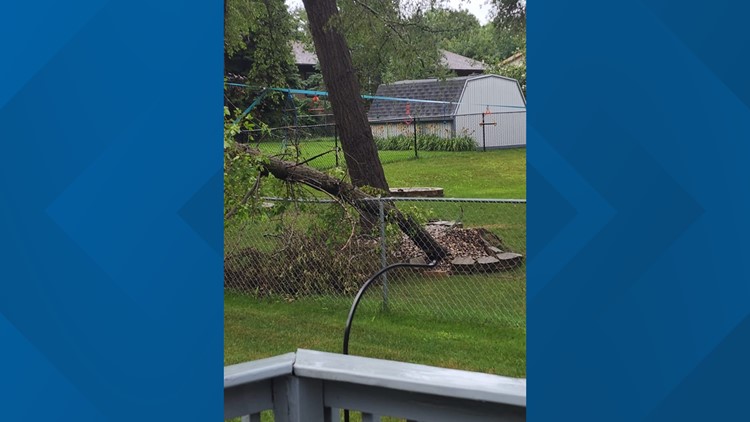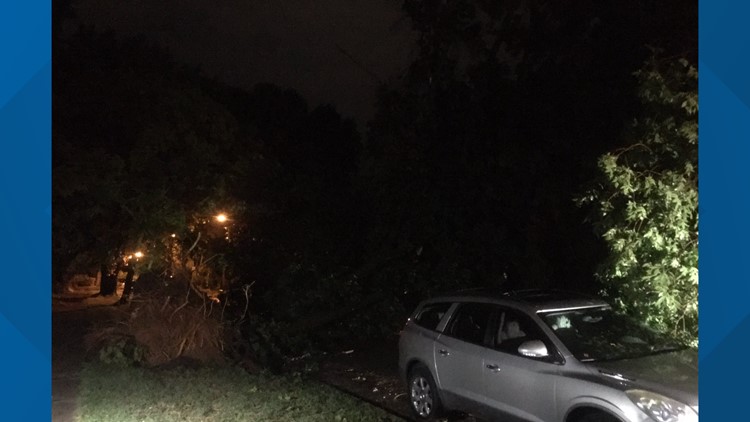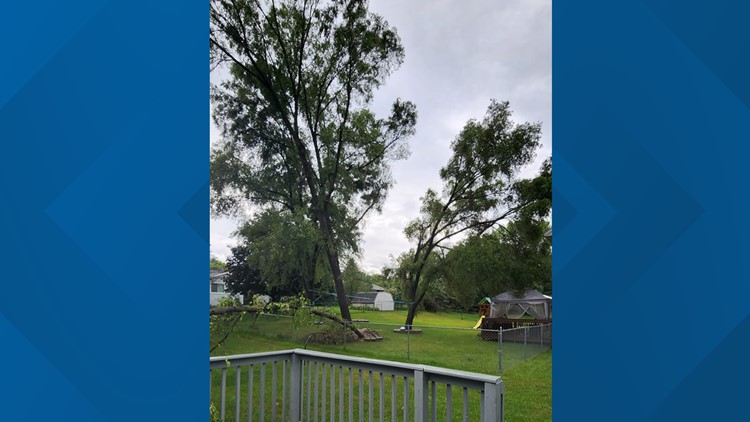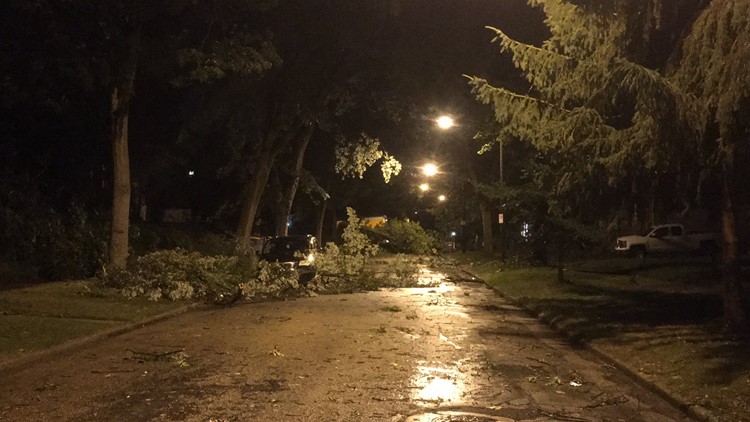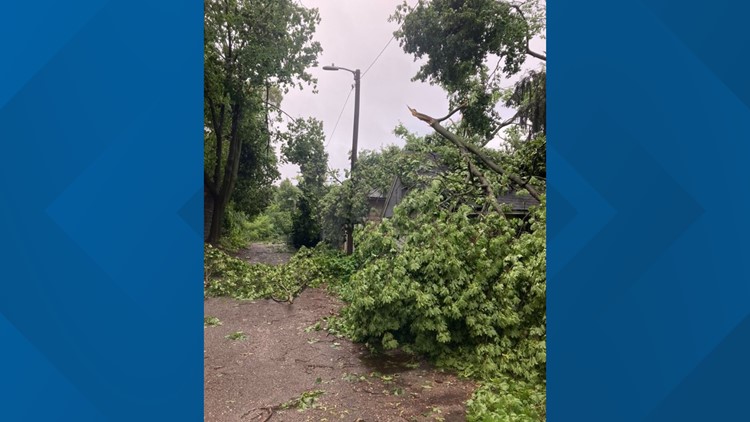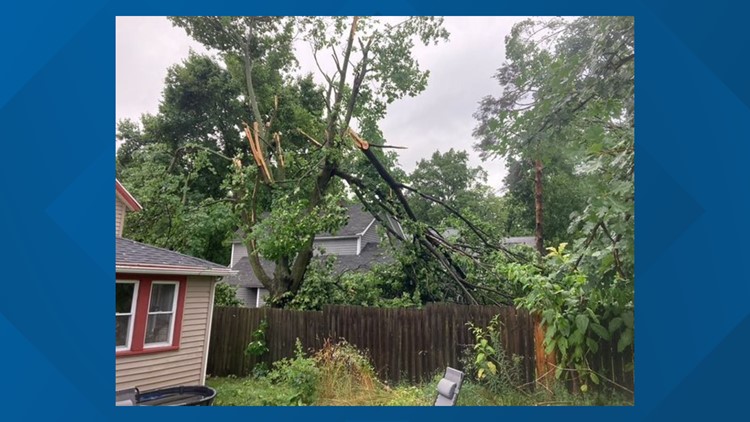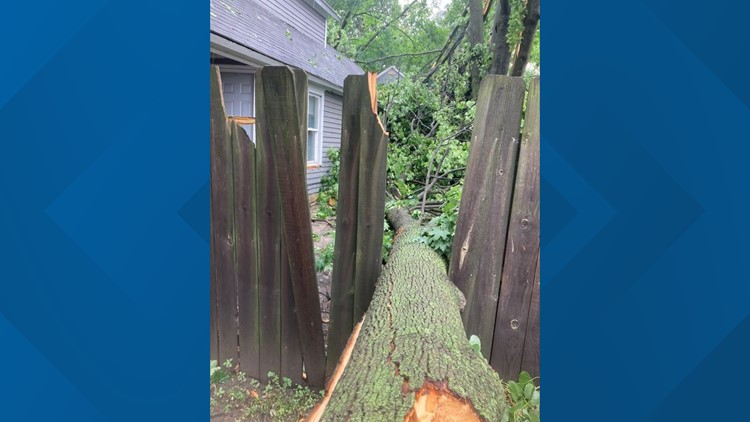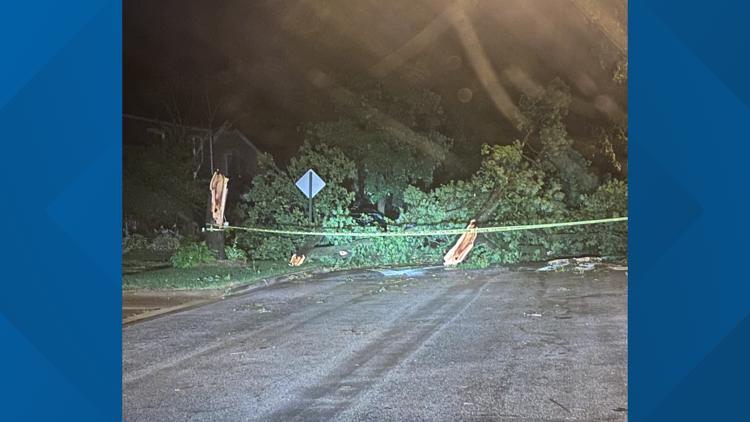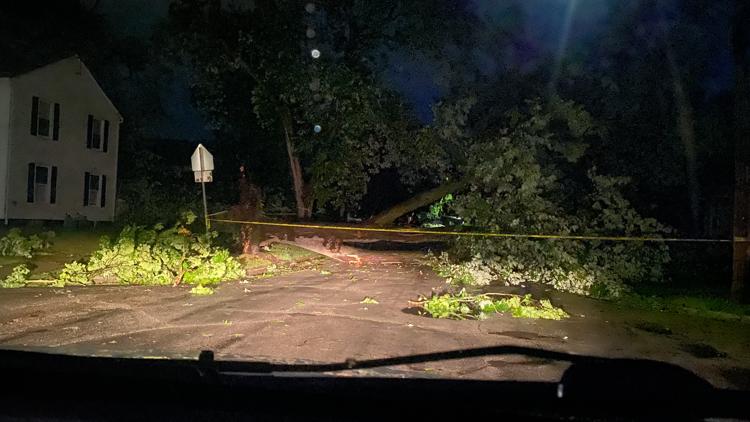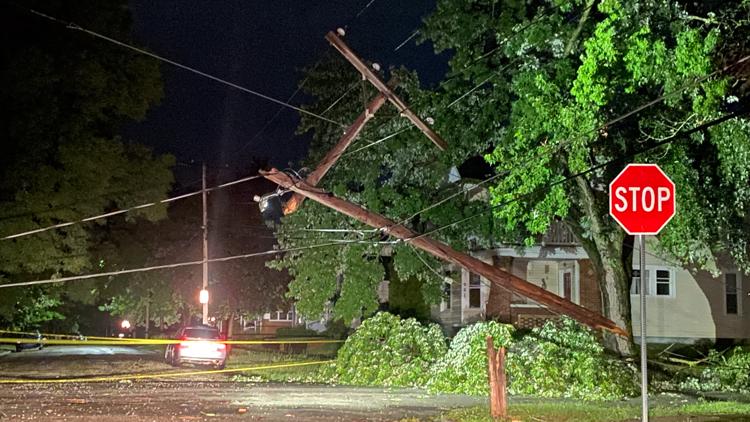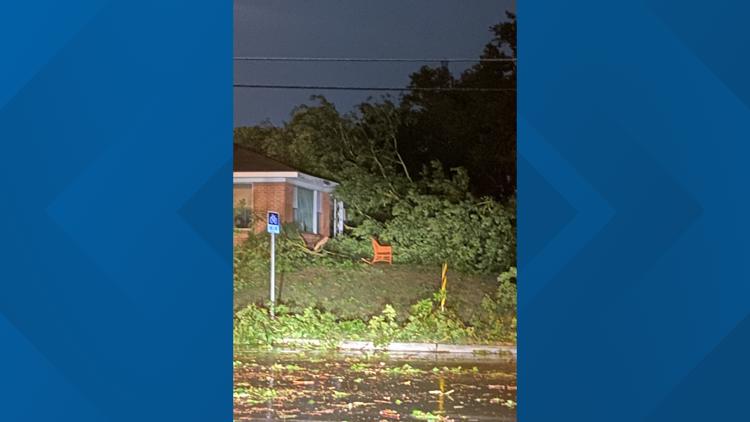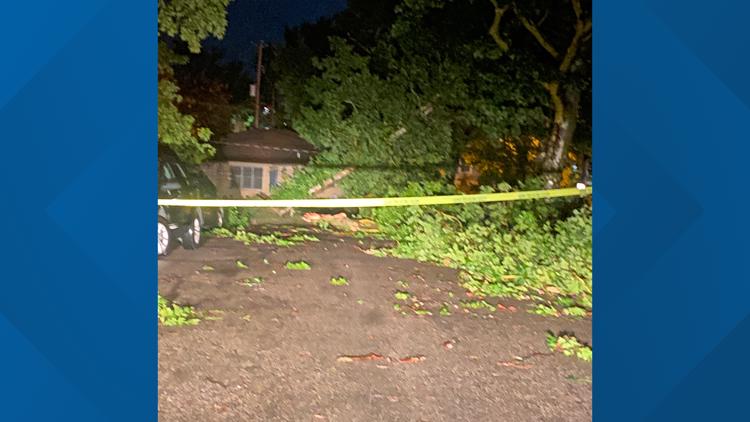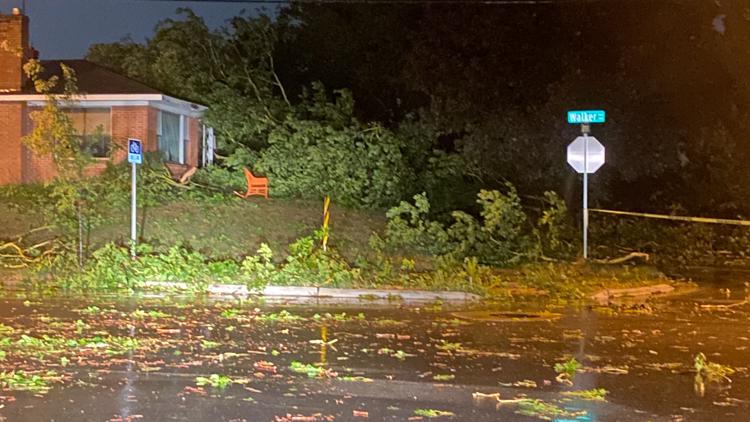GRAND RAPIDS, Mich. — In the wake of a storm with up to 60 mph winds that tore through West Michigan Saturday night, thousands are now faced with cleaning up storm damage.
Many will be looking for crews to help with the jobs too big to handle alone, like tree trimming or debris removal — but the Better Business Bureau warns there may be people trying to take advantage of this need.
Severe storm damage across West Michigan
The BBB says you should take steps to ensure you are finding reputable companies you can trust before hiring.
Follow these tips below to avoid being scammed:
- Track Record. Before you hire, check out the company’s BBB Business Profile at BBB.org. It’s fast, easy and free. Also check to see if they are a member of professional organizations, such as The International Society of Arboriculture, American Society of Consulting Arborists, or Tree Care Industry Association.
- Look for the BBB Accredited Business Seal. BBB Accredited Tree Service Companies meet BBB Accreditation standards, which include a commitment to build trust, advertise honestly, tell the truth, be transparent, honor their promises, be responsive to their customers, safeguard privacy, and embody integrity.
- Cost Comparisons. Get at least three quotes in writing, compare the quotes based on the same specifications and make sure they have proper equipment to perform the job quoted. Don’t assume that tree stump removal is included if it’s not specified. Remember, quality of work may be more important than price.
- References. Ask for references from the company’s last three jobs and contact them for testimonial.
- Licensing and Permits. Check your local laws for required licensing and permits and make sure you confirm that the company obtains what is required.
- Local Business Tax Receipt / Ordinances. Some communities have safe tree ordinances and require a business to obtain a local business tax receipt. Check with your local tax collector’s office and know your local ordinances before you have any trees removed. A reputable tree company will know the local ordinances before starting any project.
- Insurance. Verify the company has personal and property damage liability insurance and workers compensation insurance by getting certificates of insurance with you listed as the certificate holder. You should also verify proof of Workers Compensation Insurance. Make sure that all workers on the job site are covered and are using hardhats along with other personal protective equipment.
- Written Contract. Do not permit work to start without a signed, written contract that includes start and completion dates, exact costs, specific work to be done, to include protection of your property, clean up and removal of debris. Be sure to read the fine print carefully.
- Deposits and Payment. Do not pay large payments up front. Stagger your payments according to work stages and do not make a final payment until the job is completed to your satisfaction. Pay by check or credit card for added protection. Paying by credit card provides some recourse, should the job not be completed as stated in the contract.
- Criminal History. Check out anyone you allow onto your property to see if they have a criminal history. Ask the company: Do they employees undergo a background check? Are they trained and certified? Will they be wearing name tags and uniforms on the job? Are the company vehicles clearly marked?
- Ask if they will perform the work according to industry standards. If they mention “topping a tree,” “lion’s-tailing” or “using climbing spikes to prune a tree” the company does not follow industry standards. “Topping” is drastically cutting back the major limbs of a tree to reduce its size. “Lion’s tailing” is an extreme stripping out of most of the interior branches of a tree. Such practices can injure or kill your tree. Sometimes these techniques will be presented as a way to save money by removing more of the tree at one time. However, a tree pruned by one of these methods may require more expensive restoration work in the future in order to save it.
Finally, you should always be wary of the following red flags from a tree service company:
- Offers a discount to act now.
- Have no printed materials, letterhead, bid forms, etc.
- Is doing door-to-door solicitations.
- Is vague about his formal credentials as an arborist.
- Offers an unusually low price… at first.
- Suggests topping techniques or lions-tailing to save on costs.
- Pressures you for an immediate decision.
- Uses climbing spikes on trees unless they are being removed.
- Only accepts cash payments.
Find a tree service professional near you here and read more about hiring a contractor here.
You can file a complaint about a business or write a review here.
►Make it easy to keep up to date with more stories like this. Download the 13 ON YOUR SIDE app now.
Have a news tip? Email news@13onyourside.com, visit our Facebook page or Twitter. Subscribe to our YouTube channel.


